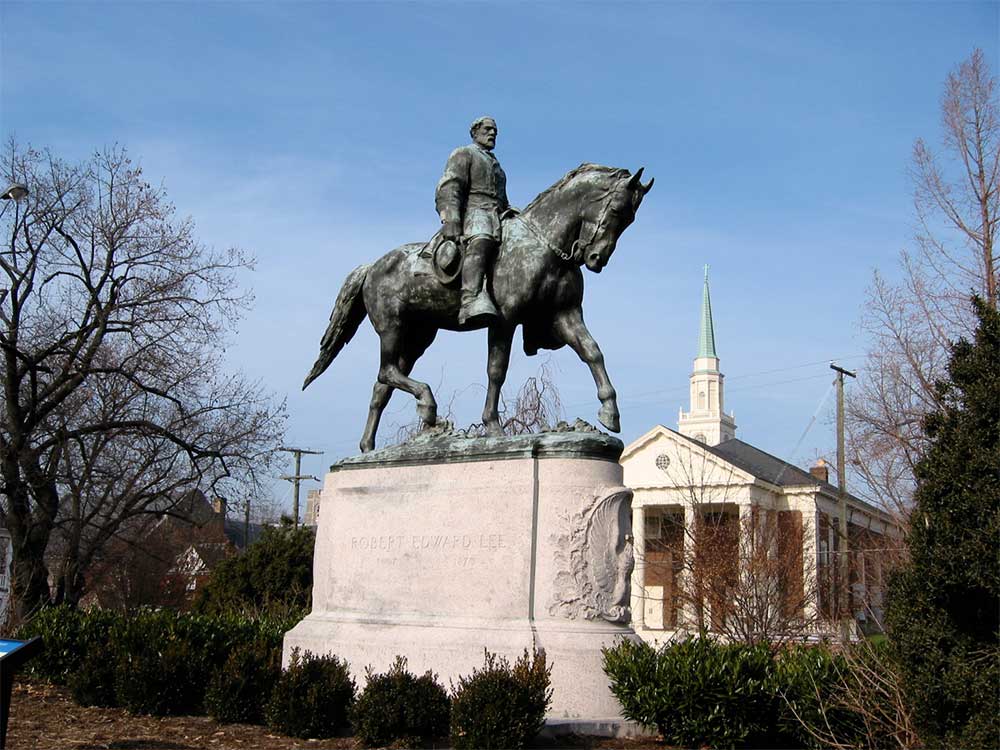Originally posted in the Hyper Allergic by columnist, Hakim Bishara
The University of Virginia researchers wrote that the data “provides compelling evidence that these symbols are associated with hate.”
Opponents of the removal of Confederate monuments in the United States have long defended them as emblems of “Southern pride,” rather than symbols of racism and hate. However, a recent study by researchers at the University of Virginia (UVA) in Charlottesville found a damning correlation between the number of documented lynchings of Black people in a county with the number of local Confederate monuments.
The research group was led by Kyshia Henderson of UVA’s Social Psychology Program, who worked with data scientist Samuel Powers and professors Sophie Trawalter, Michele Claibourn, and Jazmin Brown-Iannuzzi at the university’s Batten School of Leadership and Public Policy. Analyzing county-level data from 1832 to 1950, they concluded that that the number of lynchings in a given county was found to be a “significant predictor” of the number of Confederate memorials in each locality.
“This finding provides concrete, quantitative, historically and geographically situated evidence consistent with the position that Confederate memorializations reflect a racist history, marred by intentions to terrorize and intimidate Black Americans,” the researchers wrote in their study.
In July, Charlottesville’s statues of Robert E. Lee and Stonewall Jackson were finally taken down, together with a nearby monument nicknamed “Johnny Reb.” These three statues were erected not far from or long after the 1898 lynching of John Henry James, a Black ice cream vendor who was falsely accused of raping a white woman. According to the researchers, this is one of many examples that “[provide] compelling evidence that these symbols are associated with hate.” A historical marker commemorating James’s life was installed in 2019 on the grounds of Charlottesville’s Albemarle County Courthouse, where he was lynched by a white mob.
The researchers also cite a previous study stating that many confederate monuments were erected during the Jim Crow era after the war. Reviewing 30 dedication speeches for Confederate memorials, they also found that nearly half invoked “explicit racist language,” including phrases like “love of race” and “your own race and blood.”
However, the researchers clarified the findings are correlational, not necessarily indicating a cause and effect pattern between lynchings and the erection of Confederate monuments.
“We can’t pinpoint exactly the cause and effect. But the association is clearly there,” Trawalter wrote. “At a minimum, the data suggests that localities with attitudes and intentions that led to lynchings also had attitudes and intentions associated with the construction of Confederate memorials.”
The recent study follows a wave of public debate surrounding the fate of these monuments. In recent years, many have been toppled or removed by local officials; but this poses a new set of questions: Where are those monuments now? And what will it take to ensure they are never put back on a pedestal?
On Indigenous Peoples’ Day, October 11, a group of researchers from Rutgers University-Newark released an interactive map tracing fallen statues and the date and circumstances of their dismantling. The group — led by Lyra D. Monteiro, an assistant professor in American Studies, and her former students Hayat Abdelal and Tyler Crespo Rodriguez — has also launched the social media project “How to Kill a Statue,” tracking every monument defaced, toppled, or removed last summer.
“Our emphasis is on highlighting the tendency for these statues to survive such attacks — even if they’re moved elsewhere, they’re often cleaned, dredged from rivers, have missing body parts reattached by governments or other owners of the statues, and stored for their own safety,” the group told Hyperallergic. “We believe that this reflects the power inherent in the oppressive nature of these physical objects.”


